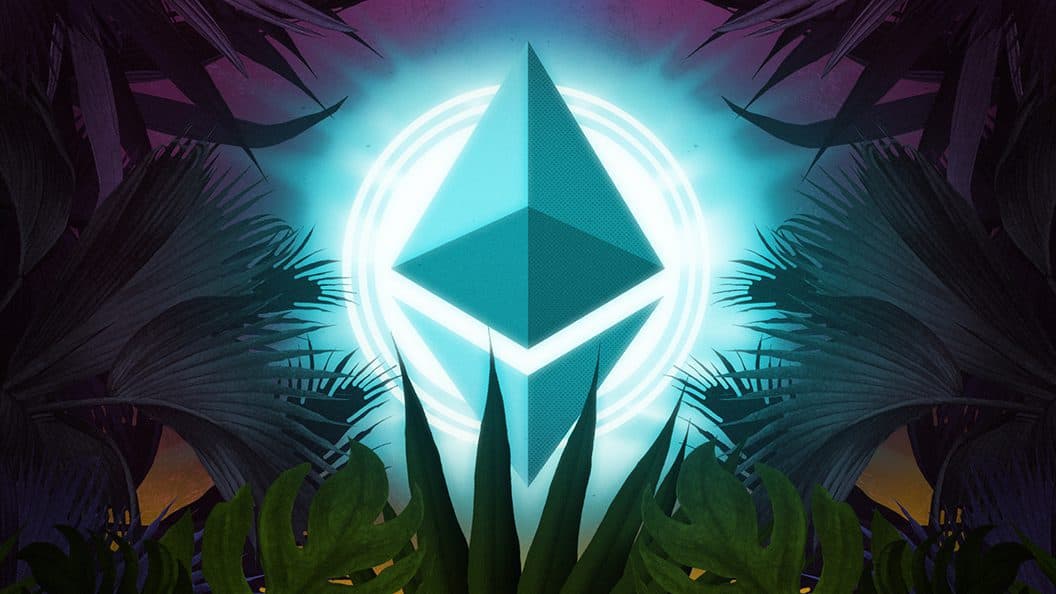What Could Happen to the Ether Price Following The Merge?
The Ethereum Merge is expected to induce a period of high volatility in the crypto markets, with some anticipating a move to the downside

Blockworks exclusive art by Axel Rangel
- Traders are anticipating higher prices in the $1,850 to $2,000 range in the lead up to the Merge
- Other industry participants believe the crypto’s “non-event” will likely spark a trading frenzy in the other direction
Now that the Ethereum network’s transition to proof-of-stake (PoS) is right around the corner, traders are placing bets in crypto’s derivatives and spot markets in anticipation of future ether price moves on the other side of the Merge.
The Ethereum Merge is thought to be the most significant upgrade event in the crypto industry’s history. A lot is riding on the successful switch from proof-of-work to proof-of-stake, and it’s likely to affect the price of bitcoin (BTC) and ether (ETH) significantly.
Given the importance of the event — expected to happen on our about Sept. 15 — bullish experts hope the hype and subsequent media frenzy will buoy the price in the short term.
Yet there is a possibility that, instead of a smooth transition, the merge won’t go as expected or that a contentious hard fork could end up negatively impacting crypto valuations across the board.
Hard forks are already being anticipated, and they may create confusion, particularly among retail investors. Long-time crypto investor and Ethereum bull Chandler Guo told Blockworks earlier this month there was roughly a 10% chance the network could fork and he would support a stablecoin built around a proof-of-work fork should it occur. The major stablecoin issuers have all said they will honor redemptions solely from the canonical proof-of-stake Ethereum chain.
Buy the rumor?
The Merge could also very well shape up to be a “buy the rumor and sell the news” event — a common scenario in speculative markets that see prices rise ahead of anticipated news catalysts, before falling again once news is officially confirmed, begetting frenzied selling.
Ether has already outperformed bitcoin in the past few weeks due to hype surrounding the upgrade. The number two crypto is up around 17% over a 30-day period to about $1,700 on spot markets, while bitcoin remains relatively flat at 1.7% up, trading near $21,700.
Traders in the options markets for ether are already betting big on the Merge. Call options are significantly greater when compared to puts, with the majority of traders across major derivatives exchanges opting for a strike price between $1,850 and $2,200.
A call option for ether gives the holder of the contract the right to buy the crypto at a strike price, while conversely, a put option gives the holder the right to sell it at a predetermined price. The contracts are set to expire on Sept. 30, 15 days after the anticipated merge date.
Meanwhile, open interest for ether’s options contracts across Deribit, OKEx, Bit.com and CME are also up considerably from a July low of $2.6 billion to around $7.8 billion at current levels. A ratio of 1.64 from puts to calls means traders are anticipating future price rises ahead of Sept 15.
What could go wrong with the Merge?
No one knows what will happen immediately after ether’s merge between its Beacon Chain and Mainnet. Some industry participants remain skeptical, believing that a lot of the price action has already taken place.
Prices would likely dip should the Merge be delayed in some fashion, which would harken back to similar instances in Ethereum’s history since at least 2016.
“Around the Merge we can expect increased volatility,” Max Kordek, co-founder of blockchain application platform Lisk, told Blockworks.
“Given the current economic climate, prices are more tied to interest rates and inflation than they are the technological advancement of Ethereum itself,” said Kyle Klemmer, COO of Web3 gaming engine Mech.com.
While the Merge changes the consensus mechanism to PoS, it won’t expand network capacity or lower gas fees. The cost of transactions is mostly related to demand for Ethereum block space.
PoS in itself does nothing for transactions-per-second (TPS) or speed, said Race Capital partner Chris McCann.
“The current Ethereum TPS is 10-20, with the median being around ~13 TPS,” he said. “Moving to proof-of-stake will not change this.”
Scaling improvements will begin to arrive after the next planned upgrade — EIP-4844, also known as danksharding after Ethereum researcher Dankrad Feist and the scaling technique sharding.
The market has already known for quite some time that the proof-of-stake transition is going to happen, McCann said. Now it’s a wait and see approach as to whether the final tests for Ethereum’s transition are completed without a hitch.
The ether vs bitcoin price
One way to see how the market values the upcoming Merge is via the ether/bitcoin ratio, according to Nicholas Cawley, strategist at DailyFX.
“This spread has been moving higher since June this year, as ether outperforms bitcoin, and from a technical point of view, it has a lot more to go if it is to test prior highs made in June 2017 and January 2018,” he said.
As of Thursday 9:00 am ET, 1 ETH will fetch about 0.079 BTC. That’s about 10% shy of its late-2021 peak.
For Martin Hiesboeck, head of blockchain and crypto research at Uphold, the Merge will be a “sell the news” event.
“While Ethereum changed the world and smart contracts showed us the way to more efficient business processes and much else, I think we’ve reached a bottleneck,” Hiesboeck said.
“There is no rational basis to believe ether’s price will be majorly impacted by this overhyped non-event,” he said.
Get the news in your inbox. Explore Blockworks newsletters:
- The Breakdown: Decoding crypto and the markets. Daily.
- 0xResearch: Alpha in your inbox. Think like an analyst.






